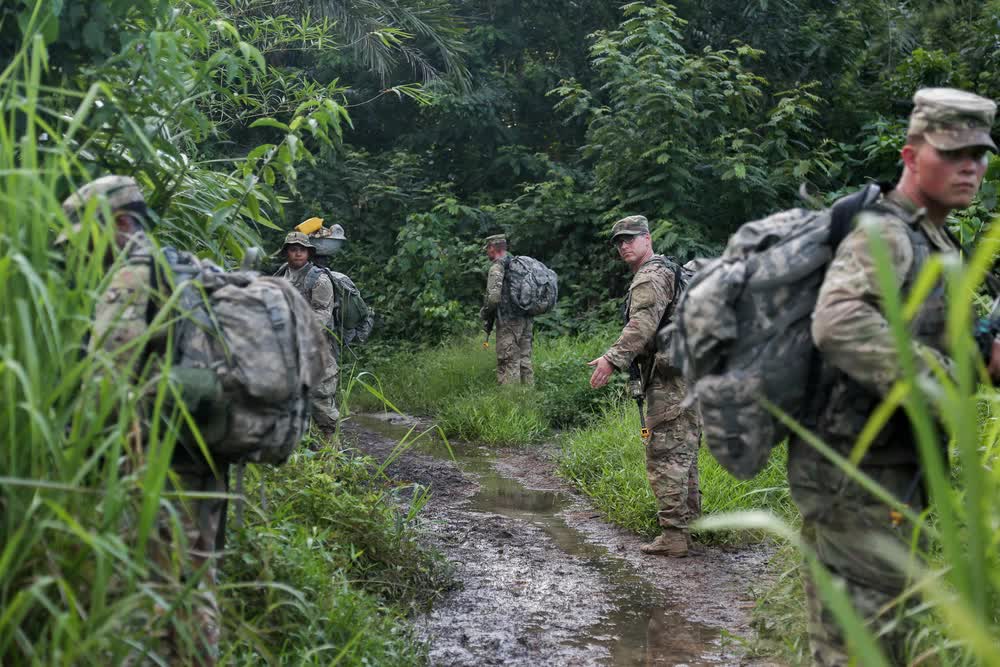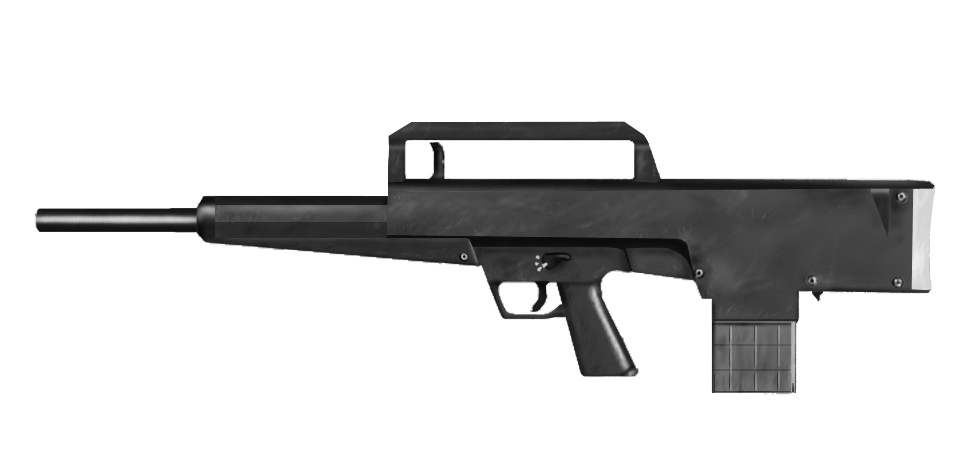The history of full-auto shotguns and why these weapons don’t make sense
- By Travis Pike
Share This Article

The 1980s marked a unique era in military weaponry and introduced a rather unconventional trend: full-auto shotguns. As they are effective only at close range, shotguns have always held a specialized role in warfare. Since the advent of firearms, rifles have reigned supreme owing to their range and versatility. The shotgun, often overlooked, has been the “middle child” of military combat arms.
Their limited range at close quarters means shotguns aren’t frequently used in military operations. Curiously, however, the U.S. Army invested significant effort into full-auto shotguns, spanning three projects over several decades.
Shotguns today bear a striking resemblance to their 1897 counterparts. Even the most advanced shotgun in our armory, the Benelli M1014, still adheres to the basic design of the Winchester M1897. That should tell you that these three programs didn’t result in a whole lot of success.
The Special Operations Weapon

The idea behind full-auto shotguns sprung to life in Vietnam as a consequence of jungle warfare. Jungle warfare is hard, a lot of it happens at close range, and often involves ambushes. In an ambush situation, a full-auto, high-capacity weapon increases your ability to hit a threat as it fires multiple projectiles with every trigger pull.
For that reason, Navy SEALs experimented with converted Remingtons known as the 7188s. However, despite the idea’s promise, the Remington 7188 had a low capacity and its recoil made it difficult to control.
In response, the Naval Special Weapons Center under the direction of Major Carrol Childers initiated the Special Operations Weapon project that aimed to create a close-range jungle warfighting weapon.
The result was the Multipurpose Individual Weapon System, commonly called the SOW, which was a full-auto shotgun with a top-fed magazine. It had two pistol grips and no stock – the idea was to fire the gun from the hip and minimize recoil. The weapon only made it to the prototype stage as funding was rescinded. The project ended, but didn’t die.
Related: Shotguns are still relevant in modern warfare thanks to a new threat
The Repeating Hand-held Improved Non-rifled Ordnance
The Repeating Hand-held Improved Non-Rifled Ordnance, or RHINO, evolved from the SOW and, because the U.S. military wanted a new combat shotgun, was a Joint Service project. As a result, it was a bigger and more defined project than SOW had been.
The DoD wanted a shotgun that could shoot buckshot, explosive slugs, signal flares, tear gas, and flechettes. The request called for a 10-round box magazine and the development of new 12-gauge ammo. The weapon would be a selective-fire design with recoil less than or equal to that of the standard Remington 870 shotgun.
The Navy led the project, and gun manufacturer Heckler and Koch teamed up with Olin to produce the gun and its new ammo. Before the gun got off the ground, however, the Navy renamed RHINO to Close Assault Weapon System, or CAWS.
Close Assault Weapon System

Not only did the Navy change the project’s name, but also its overall purpose. The project moved away from creating a weapon designed to fire multiple ammo types and, instead, a focus was placed on producing shotgun shells that achieved better range than prior designs. Several companies competed for the project.
HK’s entry to the competition was a bullpup, full-auto shotgun with a 10-round detachable box magazine. The gun could fire tungsten alloy rounds, 000 buckshot, and flechette loads. Its outer casing was made from high-impact plastic.
Famed small-arms contractor AAI produced a CAWS prototype that used a conventional layout and resembled an M16 – if the M16 was drawn by a kid who’d only seen it once while watching Predator.
S&W produced the select-fire, aptly named Assault Shotgun, but it didn’t see much success. It was also an M16 imitator and featured a short-recoil action. A company called Pan Associates tried to produce a gun called the Jackhammer but wasn’t ready in time.
Finally, HK got the contract, and the DoD started testing the weapon and concept. However, by this point, no one wanted or needed a full-auto shotgun, so the program came to a close without any official adoption.
Related: These are the 7 standout combat shotguns from around the world
Why full-auto shotguns are silly

As an idea, full-auto shotguns make sense for jungle warfare or similar environments. The problem is that shotguns have hefty recoil, and midway through a burst, you’re likely to be looking at the sky.
SOW likely tried to address this by removing the stock, yet, if you don’t have a stock, you can’t aim, and if you can’t aim, your likelihood of hitting anything drops significantly. That’s not the only problem.
The ammo for 12-gauge shotguns is bulky and heavy, tellingly, a 10-round 12-gauge magazine is longer than a 30-round M16 magazine. A soldier can carry 210 rounds of 5.56 easily; the same shotgun loadout would be 70 rounds which would be eaten up quickly in full-auto fire.
On the other hand, shotguns allow you to pull the trigger once and deliver nine pellets into a target – at close range, this is often a fight-stopper. The spread of pellets means a quick shot with a flash-sight picture is still likely to be effective. The spread of a shotgun still requires you to aim the gun, but it’s more forgiving of marksmanship flaws. Shotguns are great for night fighting and for hitting moving targets with effective hits. However, a full-auto function doesn’t enhance any of the shotgun’s advantages.
The United States military is over the idea of full-auto shotguns. Sure, the Marine Corps tested a few AA-12s in the early days of the GWOT, but they never adopted any, and the tests weren’t extensive. A full-auto shotgun just doesn’t make sense.
Read more from Sandboxx News
- Ukraine’s F-16s could soon be carrying stealthy long-range cruise missiles
- Evidence is mounting that Lockheed Martin’s SR-72 could be in production
- Everything you need to know about Ukraine’s invasion of Russia
- 8 places the CIA and military took me that you should visit
- Using roleplayers to train for hostage-rescue operations with Delta Force
Related Posts
Sandboxx News Merch
-

‘AirPower’ Classic Hoodie
$46.00 – $48.00 Select options This product has multiple variants. The options may be chosen on the product page -

‘Sandboxx News’ Trucker Cap
$27.00 Select options This product has multiple variants. The options may be chosen on the product page -

F-35 ‘Lightning’ Framed Poster
$45.00 – $111.00 Select options This product has multiple variants. The options may be chosen on the product page

Travis Pike
Travis Pike is a former Marine Machine gunner who served with 2nd Bn 2nd Marines for 5 years. He deployed in 2009 to Afghanistan and again in 2011 with the 22nd MEU(SOC) during a record-setting 11 months at sea. He’s trained with the Romanian Army, the Spanish Marines, the Emirate Marines, and the Afghan National Army. He serves as an NRA certified pistol instructor and teaches concealed carry classes.
Related to: Gear & Tech

Unit 684 – The South Korean suicide squad with the tragic history

How troops survive long deployments at sea

The French once put a cannon on a Vespa and sent it to war

Changing the Army’s mind: The M16’s long road to adoption
Sandboxx News
-

‘Sandboxx News’ Trucker Cap
$27.00 Select options This product has multiple variants. The options may be chosen on the product page -

‘AirPower’ Classic Hoodie
$46.00 – $48.00 Select options This product has multiple variants. The options may be chosen on the product page -

‘AirPower’ Golf Rope Hat
$31.00 Select options This product has multiple variants. The options may be chosen on the product page -

‘Sandboxx News’ Dad Hat
$27.00 Select options This product has multiple variants. The options may be chosen on the product page
